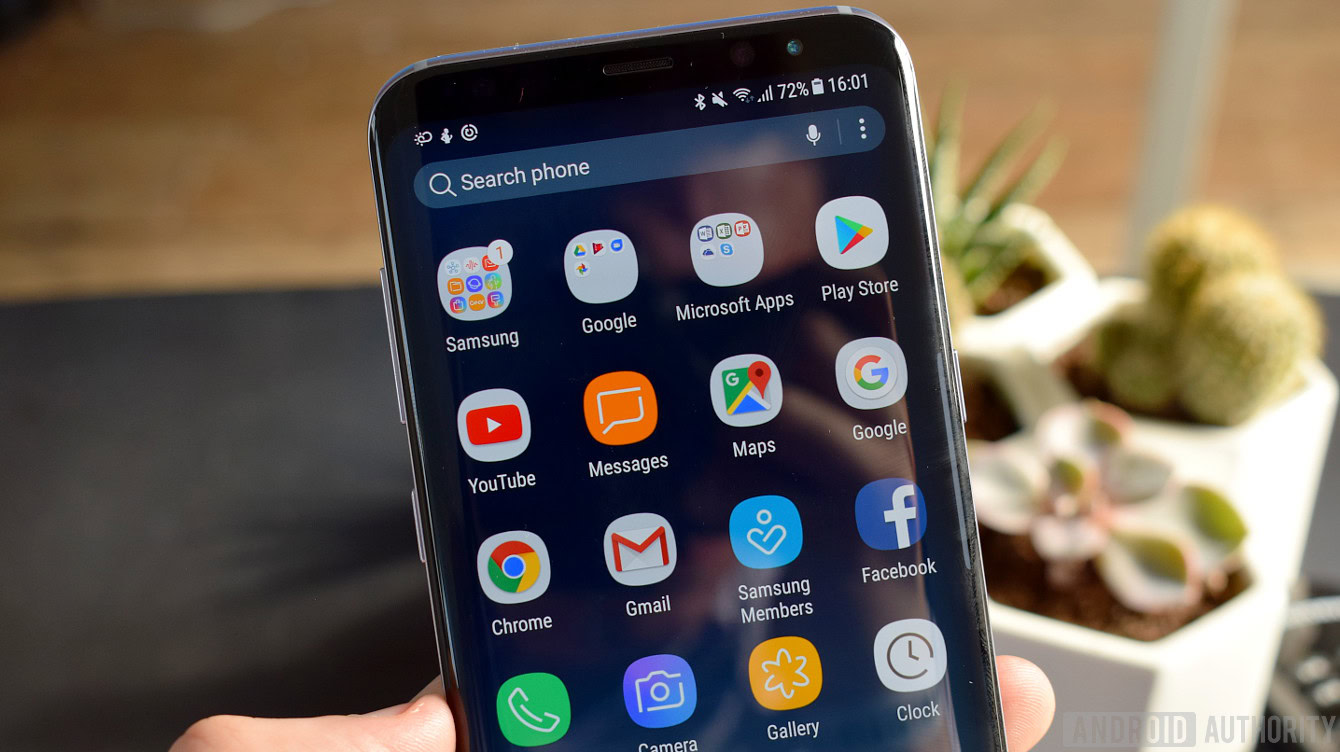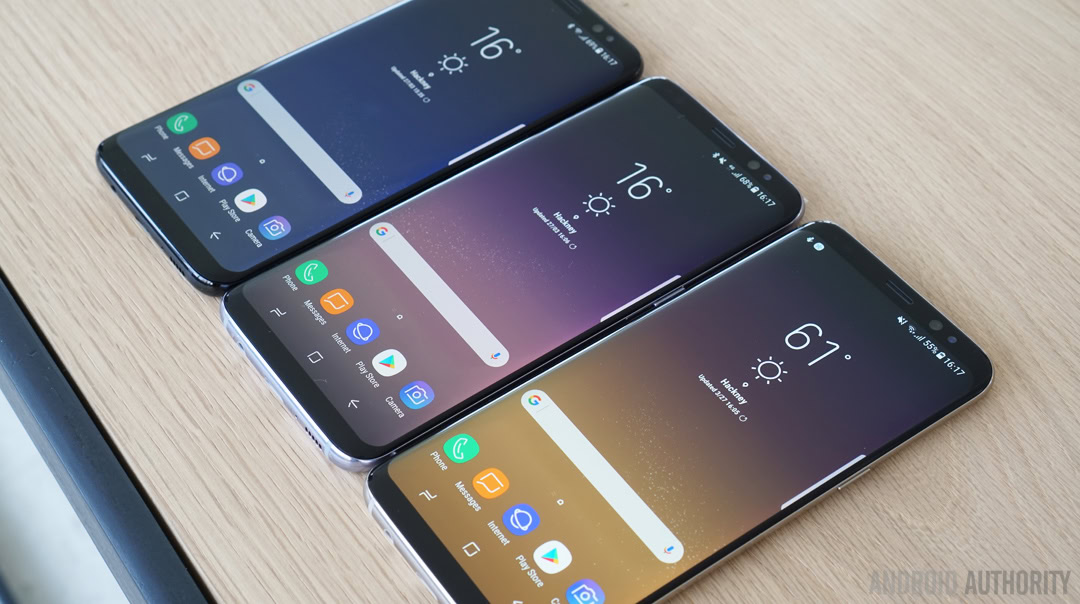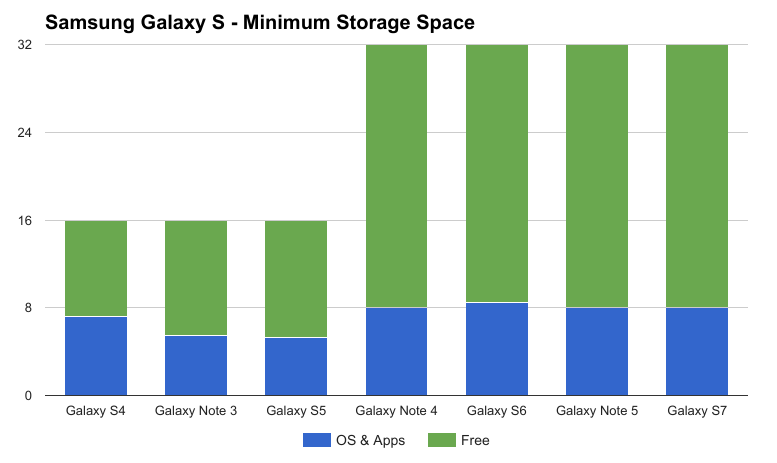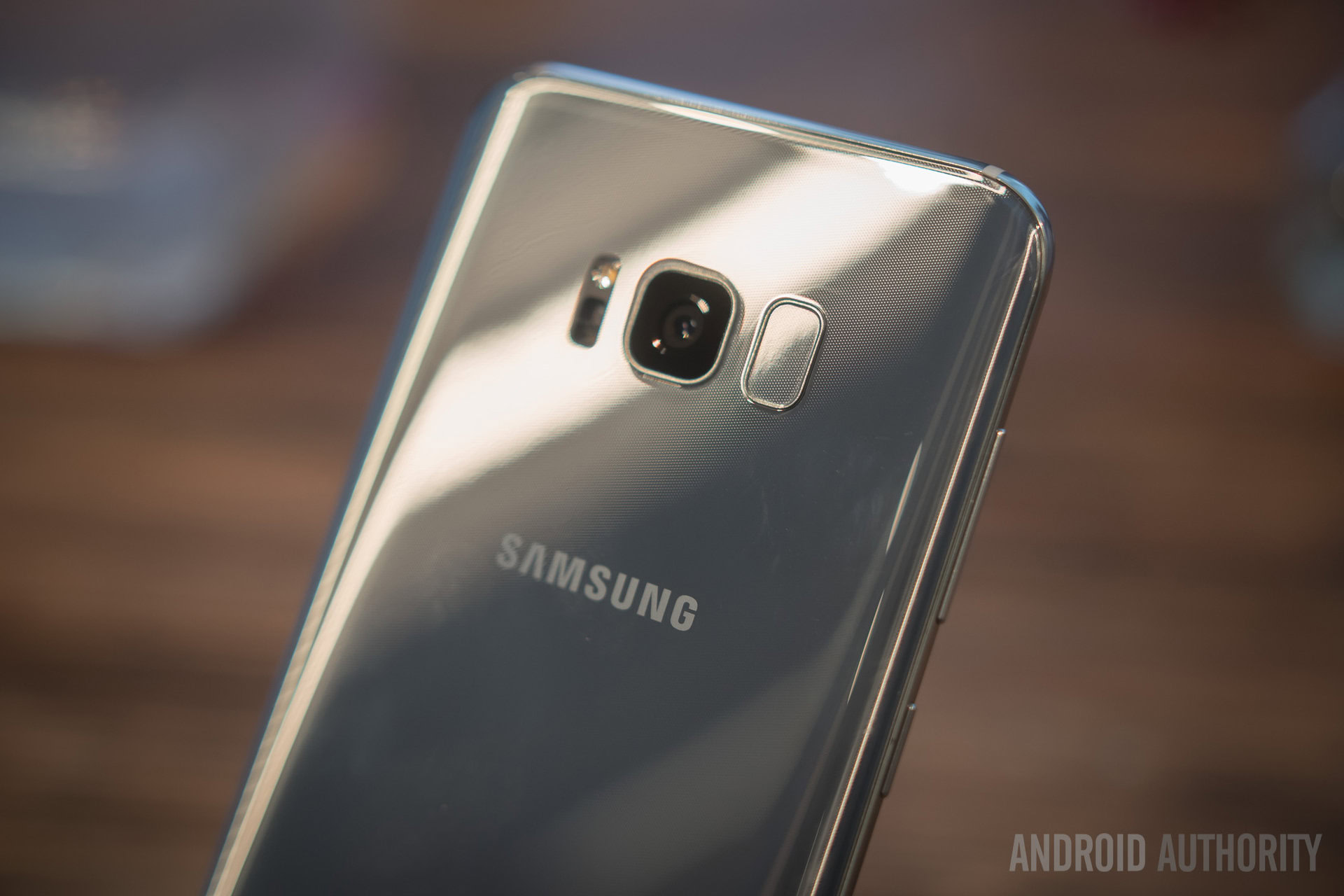Affiliate links on Android Authority may earn us a commission. Learn more.
Let's give it to Samsung for making 64 GB standard in the Galaxy S8

One of the more subtle points of note on the new Galaxy S8 spec sheet is the move on over to 64 GB of internal memory as the only storage option on offer. Samsung initially took this decision with the Note 7 and, in fact, isn’t even advertising 32 GB UFS flash memory chips over at its memory business either. The company only has three modules, which are available in 64, 128, and 256 GB capacities.
While a hard 64 GB limit might be a disappointment for those who want to splash some extra cash on a 128 or 256 GB model, it’s surely great news that Samsung has finally increased the minimum amount of storage included in its flagship smartphones.

This isn’t to say that the old 32 GB minimum storage capacity found inside the Galaxy S7, S6, and Note 5 was far too small exactly, as some users simply don’t need as much storage space as others. However, 32GB has been a moderate storage options for years and other, less expensive OEMs have moved past this old limit already. For example, the OnePlus 3T, OPPO F1 Plus, and the Lenovo ZUK Z1, among others, all ship with 64 GB as the minimum storage option.
The OnePlus 3T, OPPO F1 Plus, the Lenovo ZUK Z1, and others, all ship with 64GB as the minimum onboard memory, and it's reassuring that Samsung's latest flagship doesn't offer anything less.
It really is time that flagship smartphones started offering more storage out of the box, especially as these are the type of handsets designed for media heavy users. Those who enjoy watching high resolution video or storing a large library of high quality pictures and music. Of course, the Galaxy S8 has a microSD card slot to cater to these needs too, but I’m pleased that Samsung isn’t forcing additional expenses on its customers by taking this route.
I’m not only glad that Samsung has increased its storage size from a media consumption perspective though, the size of memory partitions eaten up by the OEM’s software has previously taken up around 25 percent of Galaxy devices’ internal storage. OEMs should ensure that customers have enough storage space left for their personal data. After all, when I buy a phone with 32 GB of storage I expect roughly that much space to be free for me to use.
The chart below shows the amount of available space out of the box with previous Samsung flagships, if you bought the minimum storage option. As you can see, it hasn’t changed much for a number of generations.

It’s fair to say that Samsung’s software ambitions with the Galaxy S8 have taken another leap forward. There’s Bixby and the assortment of integrated Samsung apps pre-installed on every device, and it’s library of audio replies alone will no doubt take up a fair bit of space. Then there’s Dex, Samsung’s new desktop operating system environment that is sure to add a significant amount of complexity, and therefore storage requirements, on top of Samsung’s regular Android OS. With these major new features, Samsung has probably seen it fit to increase storage space to make sure users have a fair amount free after all of these latest additions.
Speaking of which, the move over to 64 GB is also a boon for enterprise users. A large cache of work documents, offline emails, and other files that business users may want to cart around can take up considerable space. If the Galaxy S8 is to be taken seriously as an enterprise computing platform via Dex, then a notable amount of storage capacity is a must.

All in all, finally moving on up to 64 GB as the standard for its Galaxy S8 storage configuration is certainly the right decision. It adds minimal costs to the handset and ensures that consumers won’t be fighting against pre-installed apps for free space, can store a meaningful media collection without having to slash out for a microSD card, and still allows Samsung to pack in more advanced software features.
We shouldn’t expect anything less from a flagship experience, after all.